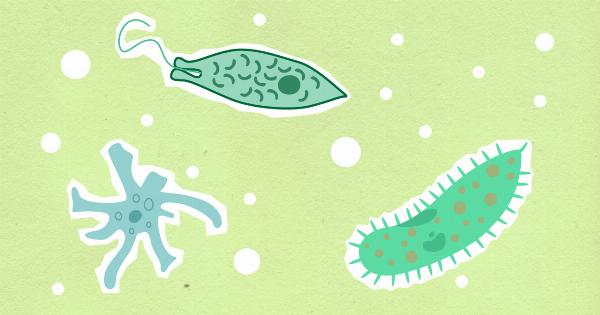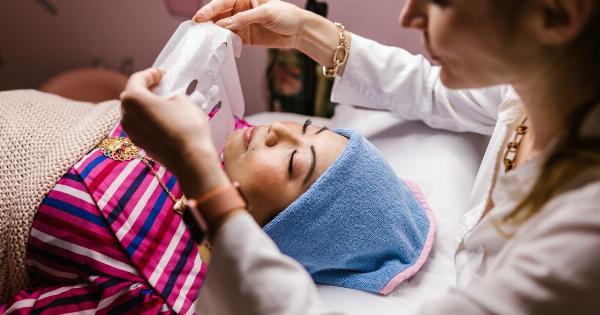There has been a long-standing belief that every cell in the human body is replaced every seven years.
This notion has often led to the idea that any health issues or changes experienced during this period are a result of a complete bodily transformation. However, recent scientific research has shed light on this popular myth, revealing that the replacement timeline for cells varies greatly across different tissues and organs.
In this article, we will delve into the fascinating world of cell turnover and debunk the seven-year myth once and for all!.
Understanding Cell Turnover
Cell turnover, also known as cell regeneration or renewal, refers to the process by which old cells are constantly being replaced by new ones. It is a vital mechanism for maintaining healthy tissues and organs in our bodies.
The duration of cell turnover can vary significantly depending on the type of cell and where it is located.
The Skin: A Rapidly Renewing Organ
One of the most frequently cited examples of the seven-year myth is the skin. It is often claimed that our skin completely regenerates every seven years, resulting in youthful and fresh-looking skin.
However, research has shown that the turnover rate of skin cells is much faster than previously thought.
The outermost layer of our skin, known as the epidermis, goes through a continuous process of renewal. It takes only around 28 days for skin cells to complete their lifecycle, shedding dead cells and replacing them with new ones.
While this turnover rate may slow down slightly with age, the complete regeneration of the skin occurs far more frequently than every seven years.
Bones: Slow and Steady Remodeling
On the other end of the spectrum, our bones undergo a much slower regeneration process. Bone cells, called osteocytes, have a significantly longer lifespan compared to skin cells.
It can take several years for bone tissue to be fully replaced, often requiring more than seven years for complete remodeling.
This slow renewal process is also influenced by factors such as age, diet, and exercise.
Building strong and healthy bones throughout life requires a consistent supply of essential nutrients, like calcium and vitamin D, as well as weight-bearing exercises, which stimulate bone remodeling.
The Brain: An Ongoing Mystery
When it comes to the brain, the exact timeline of cell turnover remains a subject of ongoing research. For many years, it was believed that brain cells, or neurons, were incapable of regeneration.
However, recent studies have indicated that certain regions of the brain do exhibit the growth of new neurons, a process known as neurogenesis.
Although neurogenesis occurs in specific brain regions like the hippocampus, which is associated with learning and memory, it does not lead to an overall replacement of all brain cells. The formation of new neurons is a much more complex process.
Furthermore, the lifespan of neurons can range from several years to the entire lifespan of an individual.
Heart and Liver: Sluggish Regeneration
The heart and liver, two vital organs in our bodies, have historically been thought to exhibit limited or no cell regeneration. However, recent research has challenged this notion.
Studies have shown that while the majority of heart muscle cells, called cardiomyocytes, do not regenerate after damage like heart attacks, a small population of cells does possess the ability to replace damaged tissue.
This discovery has opened up new avenues for potential heart regeneration therapies.
Similarly, the liver has long been recognized for its regenerative capabilities. In cases of mild to moderate damage, liver cells, known as hepatocytes, can rapidly divide and replace the lost tissue.
However, severe or chronic liver damage can impair this regenerative capacity, leading to the formation of scar tissue.
Other Tissues and Organs
The examples mentioned above only scratch the surface of the vast array of tissues and organs in our bodies. Each of them has their unique cell turnover rates and regenerative capacities.
For instance, the intestinal lining, responsible for absorbing nutrients from our food, undergoes frequent cell renewal.
It takes just a few days for intestinal epithelial cells to be replaced, ensuring proper function and preventing damage from factors like gut bacteria or toxins.
On the other hand, cells in the skeletal muscles have a longer lifespan, persisting for several years. While individual muscle fibers do not regenerate, an increase in muscle mass can occur through the enlargement of existing muscle fibers.
Debunking the Seven-Year Myth
Now that we have explored various organs and their unique cell turnover rates, it is clear that the notion of all cells in the body being replaced every seven years is far from accurate.
The seven-year myth fails to consider the diversity of cells, their locations, and the different regenerative mechanisms employed by each tissue or organ.
It is essential to recognize that cell turnover is a complex and ongoing process that happens continuously throughout our lives. While some cells may regenerate relatively quickly, others have a much longer lifespan or limited regenerative abilities.
The Significance of Cell Turnover
Understanding cell turnover and the unique regenerative properties of different tissues and organs has critical implications for various scientific fields.
Medical researchers can utilize this knowledge to develop targeted therapies for conditions that affect specific organs, such as heart disease or liver damage.
Understanding the limitations and regenerative abilities of various tissues can guide the development of new treatments that promote healing and tissue regeneration.
Furthermore, this understanding also highlights the importance of maintaining a healthy lifestyle throughout life.
Adequate nutrition, regular exercise, and avoidance of harmful factors like smoking or excessive alcohol consumption are essential in supporting optimal cell turnover and overall organ health.
In Conclusion
The idea that all cells in the human body are replaced every seven years is nothing more than a popular myth.
Cell turnover rates vary greatly across different tissues and organs, with some cells replacing themselves within days, while others persist for years or even the entire lifespan.
Understanding the complexities of cell turnover and regenerative processes is crucial for advancing medical research, developing targeted therapies, and promoting overall organ health.
While the seven-year myth may be enticing, it’s time to embrace the wonders and intricacies of our body’s ongoing regeneration.































